Constructing Versailles: The Definitive Guide
Constructing Versailles, the making of a Palace The Château du Versailles is an iconic destination for all of those interested in French history. A stone’s throw away from Paris, Versailles was the official residence of…
21 Apr 19 · 10 mins read

Constructing Versailles, the making of a Palace
The Château du Versailles is an iconic destination for all of those interested in French history. A stone’s throw away from Paris, Versailles was the official residence of the last four generations of French royalty. All of its ornate buildings provide visitors with a glimpse into the lavish lives of the royals who lived there from Louis XIV until the French revolution that abolished the last of the monarchy. This article will provide a short history of the Palace’s construction from its humble origins as a hunting lodge in the 1620s to the epitome of luxury that Louis XIV imagined in the 1710s.
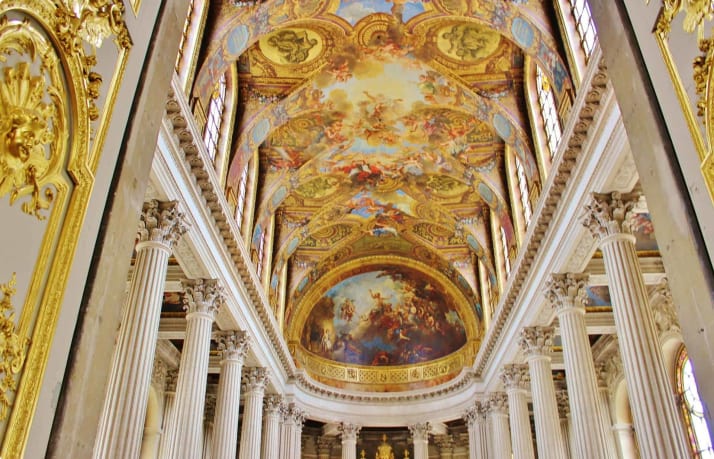
The Humble Origins of Versailles
The first building to be set on the land now home to the grand Versailles palace was a small hunting lodge commissioned by Louis XIII. In his youth, Louis XIII had visited the wooded area, which was barren of any human structures and overrun with deer, boar, and pheasants. The site was secluded and far from Paris’ city clamour, a quality which pleased the soon-to-be king. Three years later, he was crowned king and was unable to return to the area for another decade, as he kept busy with his new monarch status. A decade went by, but Louis XIII’s love for the site never faltered. In 1623, he began construction on a modest hunting lodge to use as a retreat. The site became a sacred, male getaway for him and a lucky few friends. Not even his wife, queen Anne of Austria, was given the privilege of staying overnight, though she visited during the day on a couple of occasions.
Critics of the small lodge indicated that it was not suitable for a king to stay. His love for the grounds perplexed many nobles of the time, who found fault with establishing a residence so far from Paris or Saint-Germain-en-Laye, where his permanent residences were. Louis XIII defied these critiques and he decided to construct a larger, more lavish chateau on the grounds to prove the site was worthy. From 1631 to 1634, construction continued on the new palace, the remnants of which can still be seen today.
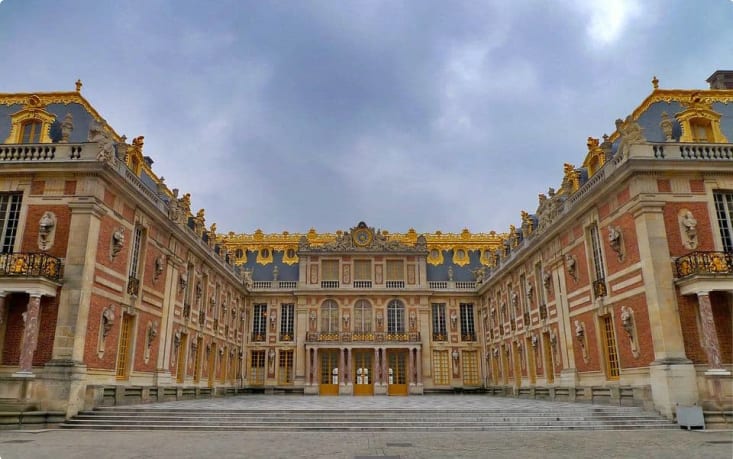
Red, White and Black
Louis XIII hired Phillipe le Roy to design the new palace in 1623. Le Roy created a three-section palace in a a U shape. It was made of red brick with white trim and a black slate roof. Because of this unique and rather unstylish use of colours for the time, the palace was given the nickname the ‘house of cards’ (Jones 2018, p. 22). Even still, Louis XIII was much happier in Versailles than at the Louvre palaces and began hosting foreign dignitaries there from the 1630s.
Louis XIV did not have as much of a personal connection to the site, since he only ever visited it with his father once to escape an outbreak of smallpox in 1641 (Jones 2018, p. 24). However, he saw its potential for greatness and chose to preserve his father’s treasure. When Louis XIV began construction on his lavish palace creation, he built around the original red walls. The construction that followed harmoniously adjoined to the original architecture. To this day, the red brick stonework that oversees the marble courtyard can be easily viewed by visitors.

The Sun Palace
The vast majority of the constructions to Versailles are attributed to Louis XIV’s time. After about a decade of neglect after Louis XIII’s death, his young son began to take hunting trips in the area more frequently, just as his father had. From approximately 1661, Louis XIV ordered the site’s expansion to make the chateau into a more ‘fun palace’ (Jones 2018, p. 30). Louis XIV wanted the works on the palace to surpass the refurbishments being made to the Louvre and Tuileries occurring at around the same time. The King sought to build a place that would establish him as a leader to be reckoned with. The grandeur of the palace glorified his divine status as the ‘Sun King’, a title which he self-nominated due to its symbolism as the ‘giver of life’ and ‘centre of the universe’ (Jones 2018, p. 36). Through the beauty of the palace, Louis XIV was able to wield soft power over his courtiers (Worsley & Castor 2016) by creating an oasis of luxury in which all noblemen wanted to spend time and curry the king’s favour. Courtiers who spent the most time at Versailles, close to the king were the ones who earned gifts and money. Thus everyone was determined to be invited to its parties and reside there. As Lucy Worsley indicates, because the courtiers spent so much time attending the events held at Versailles, including daily ceremonies of the king’s life, they did not have time to plot a coup against him (2016). No expense was spared to increase the king’s soft power and demonstrate his influence.

Versailles’ Masterminds
A team of architects, artists, sculptors and others set about work on the Palace of Versailles in the 1660s. However, there were three experts that lead the way to the quintessentially French Baroque-style palace:
- Louis Le Vau (1612-70) – From 1639, Louis Le Vau was well known among upper class Frenchmen, many of whom were government officials who hired him to construct their private mansions (Château de Versailles). It was his successes with these noble houses that drew the attention of Louis XIV. From approximately 1654 until his death, Le Vau became the first architect to the king and was hired for a number of construction and beautification projects, including The Château Vincennes, La Salpêtrière hospital and the Louvre (The Encyclopedia of World Biography). He was charged with creating the initial plans for Versailles in 1661. His plans expanded the existing palace with two large wings. This time, he designed them to be made of white marble, but keeping with the slate roof. He is also recognised for his creation of the palace’s Orangery and Ambassadors’ Staircase, which was later destroyed in 1752 (Versailles 3D).
- Andre Le Nôtre (1613-1700) – Andre Le Nôtre was the landscape architect that designed the incredible 800-hectare gardens. He came from a family of royal gardeners dating back to the 16th century. His formative years were spent maintaining and improving the Tuileries gardens under his father’s instruction. He later designed the Vaux-le-Vicomte gardens, which was the primary reason why Louis XIV contracted him for the Versailles gardens. Le Nôtre used open air and shade to play create different illusions of light. This harmonised with the optical illusion design of the flowerbeds. He was also responsible for the installation for the stunning 5.57 km-long Grand Canal. Louis XIV greatly admired Le Nôtre’s work and the two became genuine friends, a highly coveted and uncommon occurrence.
- Charles Le Brun (1619-90) – It was in 1664 that Charles Le Brun became first painter to the king. He was responsible for the vast majority of the interior design of the palace of Versailles, including the royal upholstery and paintings, as well as the design of much of the sculptures in the surrounding park. When visiting Versailles, travellers only need to look at the ceiling in the Hall of Mirrors to appreciate Le Brun’s immense talent.
The trio worked on a number of projects together, including the Château Vaux le Vicomte and the Hotel Lauzun. Together they championed the style of the era and created the timeless extravagance of Versailles. The three of them set the standards high for the construction to follow in decades to come. After Le Vau passed away in 1670, François d’Orbay took over his uncompleted works. In 1675, Jules Hardouin Mansart left his architctural mark on the Versailles palace, and stepped in as first architect in 1681.

Expanding the Grounds
Jules Hardouin Mansart (1646 to 1708) leveraged his family relation to famous French architect François Mansart to gain notoriety and build his career to the point where Louis XIV nominated him as first architect. At the time, the king sought to expand the grounds and assert it as the new capital over Paris. In 1677 Louis XIV announced these plans and commissioned Hardouin Mansart to ready the palace for the move (Jones 2018 p. 35). He oversaw the construction of the Aile du Midi, the Grande and Petite Ecurie, Aile du ministries, the Grand Tianon, the Royal Chapel, and the Grande Comun, among other buildings to house and entertain the entire royal family, government officials and palace staff. At its height, nearly 10,000 could be found on the grounds (Chateau du Versailles 2012). Once Hardouin Mansart created the space, the royal family moved in permanently and all government administration was relocated to Versailles. This meant that Louis XIV rarely had to spend any time in Paris. In fact, between 1682 and 1715, he only visited Paris eight times (Jones 2018, p. 35). In addition to expanding the sheer size of the palace, Hardouin Mansart also designed some of its most iconic rooms. In particular, the design of the beautiful Hall of Mirrors is thanks to him. Within Le Vau’s design was an open terrace, which largely remained unused as it was exposed to the elements. This was replaced by the Hall of Mirrors in 1684 after six years of construction. The large windows and 357 mirrors created a light-filled space, which was used as a waiting area and ceremony space as it lead directly to the king’s and queen’s apartments.
In addition to the numerous buildings that Hanouin Mansart managed to oversee, he also drafted the first designs for an opera house for the grounds. However, Louis XIV focused his attention on the Royal Chapel for the time being. It wasn’t until 1770 under Louis XV, that first architect to the king, Ange-Jacques Gabriel, succeeded in creating the Royal Opera House. This was one of only a handful of works that occurred between the time of Louis XIV’s death and the start of the French Revolution in 1789. In fact, after Louis XIV’s death, much of the court left for Vicennes (Château Du Versailles). In the following decades, the courts returned to Paris and the monarchs were chased out after them at the start of the revolution.
This video, created by the the Château du Versailles in 2012, demonstrates the progress made to Versailles’ construction:
Construction Conditions
To construct the massive structure required the manpower of over 35,000 workers. These thousands of workers’ conditions were deplorable. For the amount that was spent on its creation, very little was given to its labour. Men only earned about 5 sous each day, enough for the tiniest piece of butter (Worsley & Castor 2016). Safety practices were no where to be seen as many workers fell from scaffolding, suffered from exhaustion as they worked 12 plus hours per day, and suffered from widespread disease. In fact, three hospitals had to be built in order to attend to all of the workers injuries and five or more men died each week (Worsley & Castor 2016). Louis XIV had very little tolerance for push back. Workers went on strike for better conditions were ignored and even family members who critiqued the king after losing loved ones to the job site were imprisoned (Worsley & Castor 2016). Louis XIV was harsh and did not improve the conditions. It was likely because of his strong stance that the majority of the expansive Versailles grounds were completed during his reign. After his death, very few change were made, but rather was maintained as a snapshot of that time. Louis XIV envisioned a palace of such beauty that has lasted through the decades, and become all but synonymous with the height of the French monarchy.
This article will be published first in a series on Versailles, its construction, its heyday, and its conservation. Stay tuned to find out more about living on the grounds, including the political and fashion climate of Louis XIV’s time.

If you want to learn more about Versailles and its amazing gardens, join Odyssey Traveller’s escorted trip to the Gardens of Italy and France. On this tour, you will take a day trip form Paris to see the grounds of Versailles and will be able to compare it with some of the best gardens that Italy and France have to offer. Odyssey Traveller’s tours are all designed for the mature or senior traveller, and both couples and solo travellers are welcome.
About Odyssey Traveller

We specialise in educational small group tours for seniors, typically groups between six to 12 people from Australia, New Zealand, USA, Canada and Britain. Our maximum number of people on a tour is 18 mature aged travellers. Typically, our clients begin travelling with us from their mid 50’s onward. But be prepared to meet fellow travellers in their 80s and beyond! Both couples and solo travellers are very welcome on our tours. We have some 150 tours and offer 300 scheduled departures on offer each year. Odyssey has been offering this style of adventure and educational programs since 1983.
Odyssey Traveller is committed to charitable activities that support the environment and cultural development of Australian and New Zealand communities.
Odyssey Traveller scholarship for Australia & New Zealand University students.
We are also pleased to announce that since 2012, Odyssey has been awarding $10,000 Equity & Merit Cash Scholarships each year. We award scholarships on the basis of academic performance and demonstrated financial need. We award at least one scholarship per year. We’re supported through our educational travel programs, and your participation helps Odyssey achieve its goals. Students can apply for the scholarship by clicking on this link to find out more details.
Join our loyalty program when you join an international small group tour.
Every International small group tour taken typically contributes to your membership level in our Loyalty Program for regular travellers. Membership of the alumni starts when you choose to take your first international small group tour with Odyssey Traveller, discounts in tour pricing for direct bookings accrue from your third tour with Odyssey Traveller. To see the discounts and benefits of being a Bronze, Silver, Gold, and Diamond alumni member with us, please see this page.
For more information on Odyssey Traveller and our educational small group tours, visit and explore our website, and remember to visit these pages in particular:
- Terms and conditions applicable for booking an Odyssey Traveller tour.
- FAQ’s about Odyssey Traveller
Alternatively, please call or send an email.
Related Tours
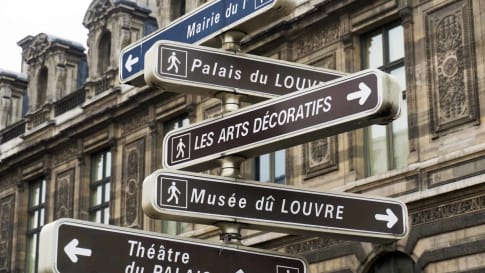
21 days
Mar, SepExplore Paris | 21-day Small Group Tour Exploring Parisian Life
Visiting France
On this small group tour of Paris, travellers take the time to join local guides to learn about the destinations within this city. Authentic experiences with like minded people and an Odyssey tour leader. Staying in apartments this European tour immerses itself in Paris' history, art, and culture in the city of light.
From A$15,325 AUD
View Tour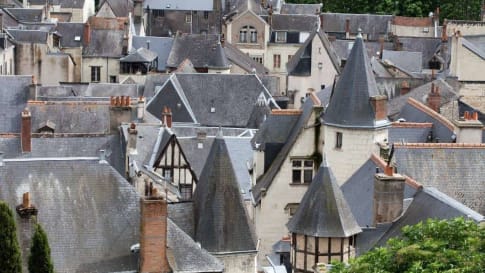
18 days
Jun, SepLoire Valley Walking Tours | Small Group Tours of France
Visiting France
The Loire Valley is the largest of all the UNESCO World Heritage sites. This small group walking tour daily itineraries cross a multitude of historic towns and villages providing authentic experiences for couples and single travellers to enjoy. A small single supplement applies to solo travelers.
From A$13,365 AUD
View Tour
24 days
Sep, AprLa Belle France small group escorted history tours for seniors
Visiting France
Travelling with like minded people on this small group we visit several culturally significant and picturesque regions of France, including Provence, Champagne, Burgundy, and Bordeaux regions, where we sample wine and learn more about the tradition of wine-making. We also visit the Loire Valley to see its many castles. Finally, we travel to Bayeux, from where we we visit Mont St Michel and spend time up on the Normandy landing beaches with local guides.
From A$19,965 AUD
View Tour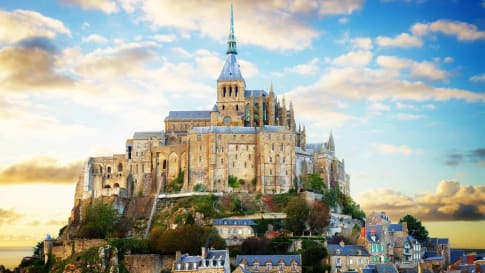
22 days
May, Sep, AprAnglo French Tour | Normandy, Brittany, Channel Islands tour
Visiting Channel Islands, England
Our 21 night program has daily itineraries with plenty of authentic experiences provided by passionate local guides in the key destinations in France, Channel Islands and England for this small group of like minded people. For Solo travellers minimal single supplement applies for this European tour.
From A$17,995 AUD
View Tour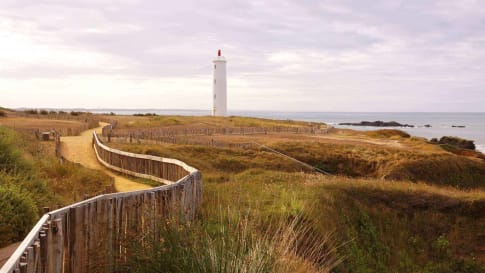
21 days
Jun, Sep, JulFrance on Foot | Small Group Walking Tours France
Visiting France
Our France on Foot small group walking is designed for the active walker and extends from the scenic island of Noirmoutier on the Atlantic Coast via the Massif Central on the borders of Limousin and the Auvergne to the snow-tipped peaks of the Alps in Savoy.
From A$19,345 AUD
View Tour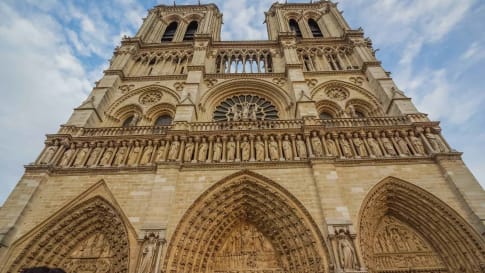
21 days
May, OctHistory of France by Rail | Escorted Small Group Tour for Seniors
Visiting France
French History by Rail small group tour is based on Ina Caro’s book of the same name. Participants live in central Paris, using apartments as a base, living as the locals do, whilst meeting each day as a small group to journey by rail and TGV to the beautiful medieval centres of France.
From A$17,595 AUD
View Tour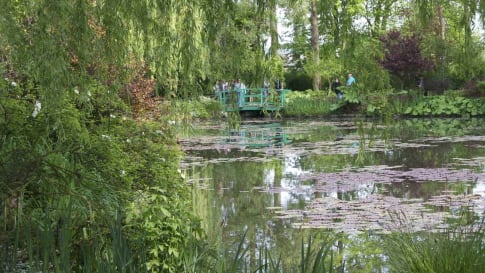
25 days
Aug, May, SepItaly and France, history of gardens small group escorted tour
Visiting France, Italy
Odyssey's small group tour explores some of the classic gardens of Italy and France that reflect changing fashions and garden designs throughout the ages. This fully escorted tour features an Odyssey Program Leader and a handful of local guides who will examine, discuss, compare and contrast the cultural and temporal similarities and diversities between the gardens of Italy and France and the historical influences on their design.
From A$17,595 AUD
View Tour

